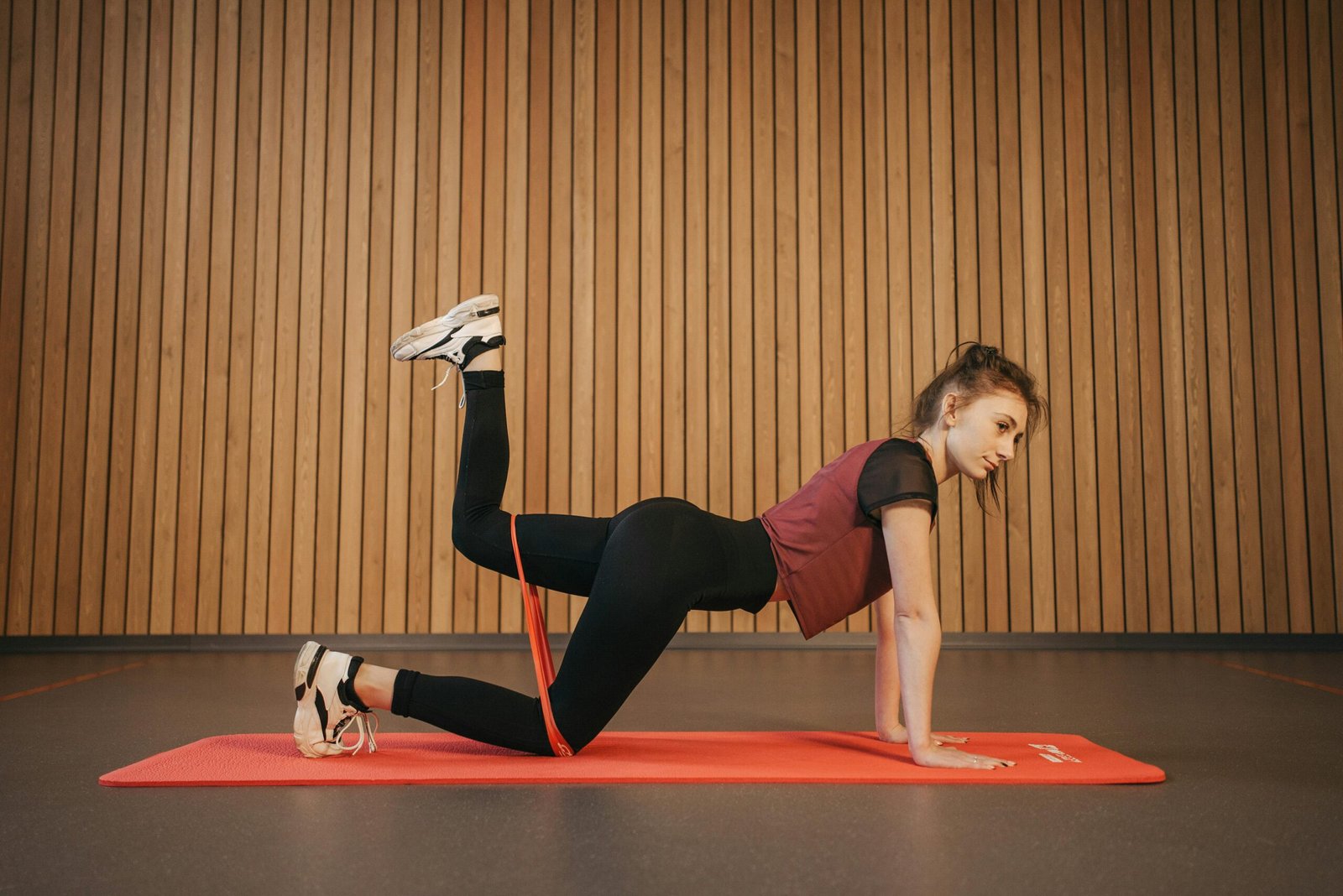
Feeling like you’ve been carrying the weight of the world on your shoulders? Well, waking up with aching neck and shoulders can certainly put a damper on your day. But fear not! In this article, we’ve got you covered with some easy tips to help relieve that tension and pain. Say goodbye to the discomfort and hello to a newfound sense of relaxation!

Stretching Exercises
Neck Stretch
To relieve neck and shoulder pain, start by performing a simple neck stretch. Sit or stand up straight and slowly tilt your head to the left, bringing your left ear towards your left shoulder. You should feel a gentle stretch on the right side of your neck. Hold this position for 15-30 seconds, then slowly return to the starting position. Repeat on the other side by tilting your head to the right. This stretch helps to release tension in the neck muscles.
Shoulder Rolls
Shoulder rolls are a great way to loosen up your shoulder muscles and alleviate pain. Start by standing or sitting up straight with your arms relaxed at your sides. Slowly roll your shoulders in a circular motion, first moving them forward, then backward. Aim for 10-15 rolls in each direction. This exercise helps to improve circulation and increase flexibility in the shoulders.
Upper Back Stretch
To stretch your upper back and relieve tension, perform the upper back stretch. Stand up straight and interlace your fingers in front of you with your palms facing outward. Gently push your hands forward, rounding your upper back and spreading your shoulder blades apart. Hold this stretch for 15-30 seconds, then release. Repeat the stretch 2-3 times to maximize its benefits.
Neck and Shoulder Release
The neck and shoulder release exercise is effective in releasing tension and promoting relaxation. Start by sitting or standing with your arms relaxed at your sides. Take a deep breath in, and as you exhale, gently drop your chin towards your chest, allowing the weight of your head to stretch your neck. At the same time, roll your shoulders back and down. Hold this position for a few seconds, then release. Repeat as needed for a soothing neck and shoulder release.
Posture Correction
Maintain Proper Alignment
Maintaining proper alignment is crucial for preventing neck and shoulder pain. Keep your head aligned with your spine, and avoid jutting your chin forward or slumping your shoulders. Engage your core muscles to support your spine and keep your shoulders relaxed and down. Practice good posture throughout the day, whether you’re sitting, standing, or walking.
Use Ergonomic Equipment
Invest in ergonomic equipment to support your posture and reduce strain on your neck and shoulders. Choose a chair with adjustable height and lumbar support to maintain a neutral spine position. Adjust your desk or workstation to the correct height so that your computer screen is at eye level and your elbows are at a 90-degree angle when typing. Consider using an adjustable keyboard and mouse to ensure proper alignment.
Avoid Slouching
Slouching puts unnecessary pressure on your neck and shoulders, leading to pain and discomfort. Be mindful of your posture and avoid slouching while sitting or standing. Keep your shoulders back, chest lifted, and spine straight. Consider using a posture corrector or reminder app if you find it challenging to maintain good posture consistently.
Take Frequent Breaks
Taking regular breaks throughout the day is important for relieving strain on your neck and shoulders. Get up from your desk or workstation every 30 minutes and stretch your neck and shoulder muscles. Take a short walk or perform gentle exercises to increase blood flow and prevent stiffness. Incorporate stretching breaks into your daily routine to help alleviate pain and maintain good posture.

Sleeping Positions
Pillow Support
Choosing the right pillow can make a significant difference in reducing neck and shoulder pain while sleeping. Opt for a pillow that provides adequate support and aligns your head, neck, and spine in a neutral position. Memory foam pillows or cervical pillows are often recommended as they conform to your body shape and help alleviate pressure points.
Avoid Sleeping on Stomach
Sleeping on your stomach can strain your neck and shoulders, leading to pain and discomfort. Try to avoid this sleeping position and opt for sleeping on your back or side instead. If you find it challenging to break the habit, consider using a body pillow or placing a small pillow under your stomach to discourage rolling onto your stomach during the night.
Use a Neck Pillow
If you tend to sleep on your back or side, using a neck pillow can provide additional support and comfort. These pillows are specifically designed to cradle your neck and maintain proper alignment while you sleep. Look for a neck pillow with memory foam or adjustable loft to find the right level of support for your individual needs.
Experiment with Different Pillows
Every person’s sleeping preferences and needs are unique, so it’s essential to experiment with different pillows until you find the one that works best for you. Consider trying different materials, thicknesses, and shapes to determine which pillow provides optimal support and comfort for your neck and shoulders. Don’t be afraid to invest in a quality pillow that promotes healthy sleep and helps alleviate pain.
Ergonomic Workspace
Adjust Chair and Desk Height
Creating an ergonomic workspace is crucial for preventing neck and shoulder pain. Start by adjusting the height of your chair and desk to ensure that your feet are flat on the floor and your knees are at a 90-degree angle. This position helps to maintain proper alignment and reduce strain on your neck and shoulders.
Keep Screen at Eye Level
Position your computer screen at eye level to avoid straining your neck while working for long periods. Use a monitor riser or stack books under your monitor to achieve the proper height. Adjust the screen angle to eliminate glare and ensure comfortable viewing. Keeping your screen at eye level reduces the need to tilt your head forward, minimizing stress on your neck and shoulders.
Use a Document Holder
If you frequently refer to documents or papers while working, use a document holder to bring them up to eye level. This prevents excessive bending or twisting of the neck, reducing strain on the neck and shoulders. Position the document holder next to your computer screen to minimize unnecessary movement and maintain proper alignment.
Position Keyboard and Mouse Correctly
Proper positioning of your keyboard and mouse can help prevent neck and shoulder pain. Place your keyboard directly in front of you, with your elbows bent at a 90-degree angle. Keep your wrists straight and avoid resting them on sharp edges. Position the mouse close to the keyboard, and use your whole arm to move it instead of straining your wrist. This setup promotes a neutral wrist position and prevents unnecessary strain on the neck and shoulders.

Heat Therapy
Hot Shower
Taking a hot shower is a simple and effective way to relieve neck and shoulder pain. The warm water helps to increase blood flow, relax muscles, and reduce tension. Stand under the showerhead and let the warm water cascade over your neck and shoulders for 10-15 minutes. Be mindful of the water temperature to avoid scalding. Enjoy the soothing effects of the hot shower as it eases your pain and promotes relaxation.
Heating Pad
Using a heating pad is another popular method for applying heat therapy to the neck and shoulders. Choose a heating pad with adjustable temperature settings and wrap it around your neck or place it on your shoulders. Start with a low temperature and gradually increase it if needed. Allow the heat to penetrate the muscles for 15-20 minutes. Heat therapy helps relax muscles, improve blood circulation, and alleviate pain.
Warm Towel
A warm towel can provide quick relief for neck and shoulder pain. Wet a towel with warm water and wring out the excess moisture. Place the warm towel on your neck or drape it over your shoulders. Leave it on for 10-15 minutes, then remove. The warmth helps to increase blood flow and relax tight muscles, providing temporary relief from pain and stiffness.
Cold Therapy
Ice Pack
When dealing with acute neck and shoulder pain, applying an ice pack can help reduce inflammation and numb the area. Wrap an ice pack or a bag of frozen vegetables in a thin towel and apply it to the affected area for 15-20 minutes. Take short breaks in between if needed. Cold therapy constricts blood vessels, decreases nerve activity, and helps reduce pain and swelling.
Cold Compress
Another option for cold therapy is using a cold compress. You can make a cold compress by filling a plastic bag with crushed ice or using a gel-based cold pack from a drugstore. Wrap the compress in a thin towel and apply it to your neck and shoulders. Press gently to minimize discomfort. Leave the cold compress on for 15 minutes, then take a break if necessary. Cold therapy provides temporary numbing relief, reduces inflammation, and promotes healing.
Stress Management
Deep Breathing
Deep breathing exercises are a simple yet effective way to relieve stress and relax your body, including your neck and shoulders. Find a quiet and comfortable place to sit or lie down. Close your eyes and take a deep breath in through your nose, filling your belly with air. Slowly exhale through your mouth, releasing any tension or stress. Repeat this deep breathing pattern for a few minutes, focusing on letting go of any muscle tension in your neck and shoulders.
Meditation
Meditation is a powerful tool for managing stress and promoting overall well-being. Find a quiet space where you can sit comfortably. Close your eyes and focus on your breath, allowing your mind to release any thoughts or worries. Bring your attention to your neck and shoulders, consciously relaxing any tension you may be holding. Practice meditation for at least 10 minutes a day to experience the benefits of reduced stress and tension.
Yoga
Yoga combines gentle stretching, breathing exercises, and mindfulness to reduce stress and promote relaxation. Incorporate yoga poses that specifically target the neck and shoulders, such as neck rolls, shoulder stretches, and gentle backbends. Participating in a regular yoga practice can improve flexibility, reduce muscle tension, and alleviate neck and shoulder pain caused by stress.
Relaxation Techniques
Engaging in relaxation techniques such as progressive muscle relaxation or guided imagery can help ease stress and tension in the neck and shoulders. Progressive muscle relaxation involves tensing and releasing different muscle groups, starting from your toes and moving up to your neck and shoulders. Guided imagery utilizes visualization to create a calm and peaceful mental state, which can then translate into physical relaxation.
Massage and Self-Care
Neck and Shoulder Self-Massage
Self-massage is a simple and effective way to relieve tension and pain in your neck and shoulders. Use your fingers, thumbs, or palms to apply gentle pressure to the tight or sore muscles in a circular motion. Start from the base of your skull and work your way down to the tops of your shoulders. You can also use a massage ball or foam roller to target specific areas. Experiment with different techniques and find what works best for you.
Foam Rolling
Foam rolling is a popular self-care technique that helps release tension and tightness in the muscles. Lie on your back and place a foam roller under your neck and upper back. Gently roll back and forth, applying pressure to the muscles. If you find a tender spot, pause and apply sustained pressure for a few seconds. Foam rolling can help increase blood flow and alleviate muscle knots in the neck and shoulder area.
Trigger Point Therapy
Trigger point therapy involves locating and applying pressure to specific trigger points in the muscles to relieve pain and tension. Use your fingers or a massage ball to apply firm pressure to the trigger points in your neck and shoulders. Hold the pressure for a few seconds, then release. Trigger point therapy can help release tension and promote relaxation in the targeted areas.
Use of Tennis or Lacrosse Ball
A tennis or lacrosse ball can be used to perform self-massage and trigger point release in the neck and shoulder muscles. Place the ball between your neck or shoulder and a wall or the floor. Apply gentle pressure by leaning into the ball and rolling it around the targeted area. Focus on any particular tight spots or trigger points. Adjust the pressure as needed, but make sure it remains comfortable. The use of a ball can help release tension and promote muscle relaxation.
Physical Therapy
Manual Therapy
Physical therapy, including manual therapy techniques, can be highly beneficial in treating neck and shoulder pain. A skilled physical therapist can use hands-on techniques to manipulate and mobilize the affected joints and soft tissues. Manual therapy can help restore proper alignment, improve range of motion, and reduce pain in the neck and shoulders.
Ultrasound Therapy
Ultrasound therapy uses high-frequency sound waves to promote healing and reduce pain. During an ultrasound session, a physical therapist applies a gel to the skin and uses a device that emits sound waves. The waves penetrate deep into the muscles and tissues, increasing blood flow and promoting tissue repair. Ultrasound therapy can be an effective modality in relieving neck and shoulder pain.
Electrical Stimulation
Electrical stimulation, also known as transcutaneous electrical nerve stimulation (TENS), can be used in physical therapy to alleviate pain and relax muscles. Electrodes are placed on the skin around the neck and shoulder area, and a low-level electrical current is delivered. This helps to block pain signals and stimulate the release of endorphins, the body’s natural pain-relieving chemicals.
Postural Exercises
Postural exercises prescribed by a physical therapist can help correct the underlying issues causing neck and shoulder pain. These exercises aim to strengthen weak muscles, stretch tight muscles, and improve overall posture. Common exercises include chin tucks, shoulder retractions, and scapular squeezes. Consistently practicing postural exercises can help address muscle imbalances and promote proper alignment.
Pain Medication
Over-the-Counter Analgesics
Over-the-counter analgesics, such as acetaminophen or nonsteroidal anti-inflammatory drugs (NSAIDs) like ibuprofen, can provide temporary relief from mild to moderate neck and shoulder pain. Follow the instructions on the packaging and consult with a healthcare professional if you have any underlying health conditions or concerns.
Prescription Medications
In some cases, stronger prescription medications may be necessary to manage severe neck and shoulder pain. These medications may include muscle relaxants or stronger opioids, depending on the severity and underlying cause of the pain. It is important to consult with a healthcare professional for a proper assessment and prescription, as these medications may have side effects and should be used under medical supervision.
In conclusion, there are various techniques and practices that can help alleviate neck and shoulder pain. Incorporating stretching exercises, maintaining proper posture, optimizing sleeping positions, creating an ergonomic workspace, utilizing heat or cold therapy, managing stress, implementing self-care techniques, considering physical therapy, and utilizing pain medications when necessary can all contribute to reducing pain and improving overall well-being. Make sure to listen to your body, adapt these tips to fit your individual needs, and seek medical advice if your pain persists or worsens. By taking proactive steps, you can regain comfort and relieve your neck and shoulder pain.





